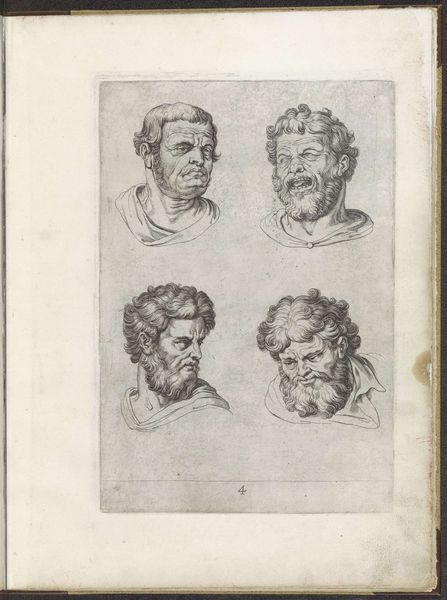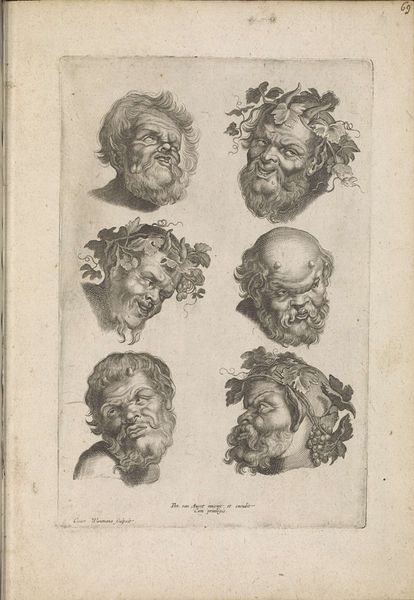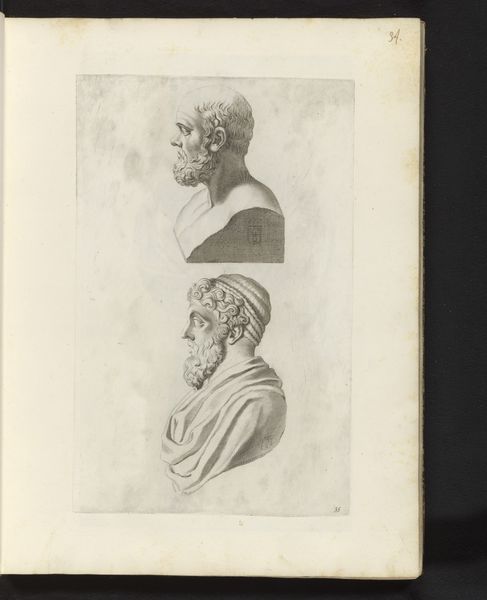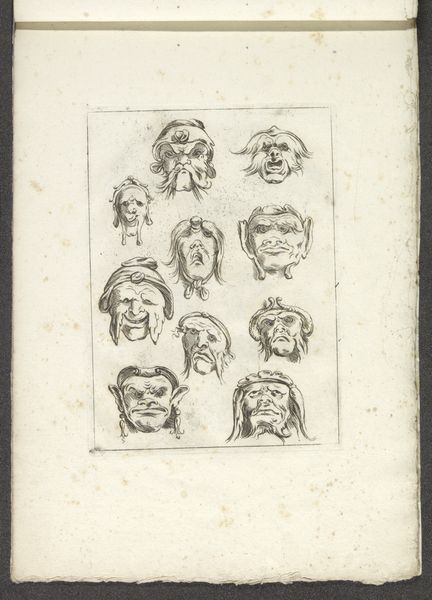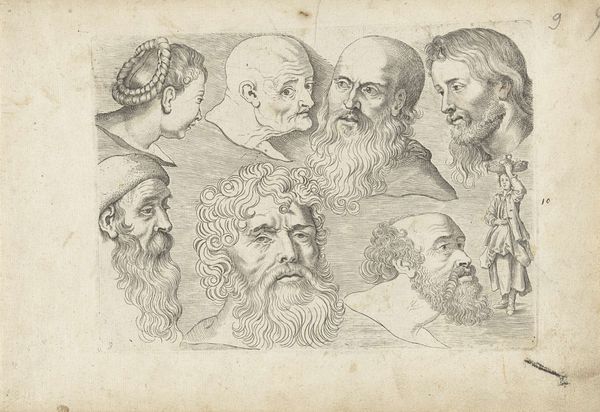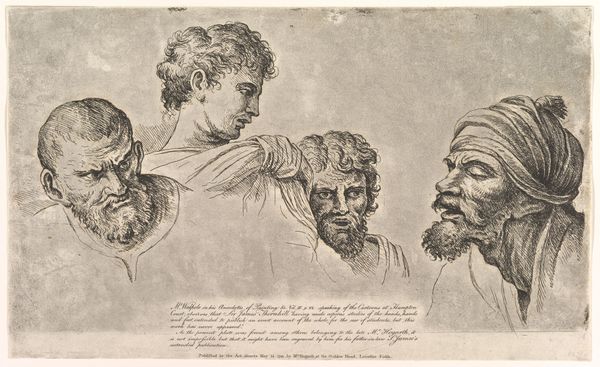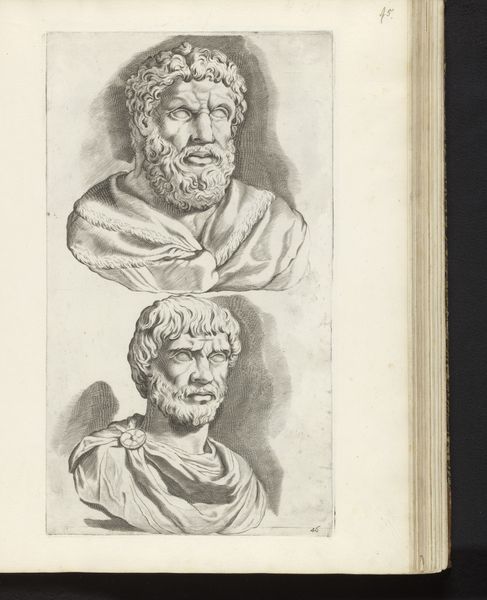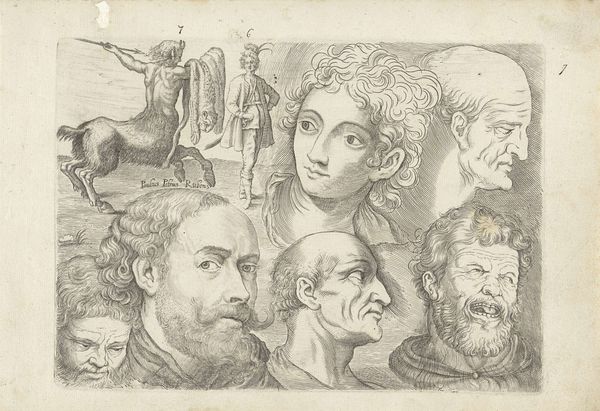
drawing, paper, pen
#
portrait
#
drawing
#
baroque
#
figuration
#
paper
#
pen
Dimensions: height 264 mm, width 189 mm
Copyright: Rijks Museum: Open Domain
Curator: Look at this drawing, “Tekenvoorbeelden van mannengezichten,” or “Drawing Examples of Men’s Faces,” made around 1629 by Pieter de Jode I. The artist used pen on paper to depict nine different male heads. What's your first take? Editor: They’re wonderfully stark! The lack of color amplifies their graphic quality; they appear almost like blueprints for emotion, templates of masculinity... almost scientific. Curator: Indeed. This drawing is fascinating as a study of archetypes. Notice how the artist captures distinct expressions, from youthful serenity to wizened contemplation. There’s almost a lineage being constructed here. Do you pick up on any deliberate social message? Editor: Not exactly, but as examples of human "types," they illustrate a very specific labor - the academic work of creating portraits in that era. It speaks to a tradition of mastery via replication and the emphasis on skilled handiwork inherent in these early pedagogical studies. How interesting that they appear almost mechanically reproduced but for their subtle imperfections... Curator: I think it tells us so much about period ideals. It gives us access to the artist’s archive of perceived identities and provides context around their function as models for aspiring painters. Also notice the variety of head coverings—how might that have communicated societal roles at the time? Editor: Yes! Headwear absolutely played a part in shaping the cultural narratives that surrounded social hierarchy. Looking at it formally though, it does so much to complicate this plane of faces... these stark black lines and tones imply so much labor as we think about the work, the life, that brought it into existence. Curator: For me, this work reminds me of how potent symbols can be. How these facial types resonate through artistic and cultural memory and get reimagined again and again. Editor: I can agree with that, thinking now of how a relatively simple piece of pen on paper continues to carry such influence for us today, centuries later.
Comments
No comments
Be the first to comment and join the conversation on the ultimate creative platform.
